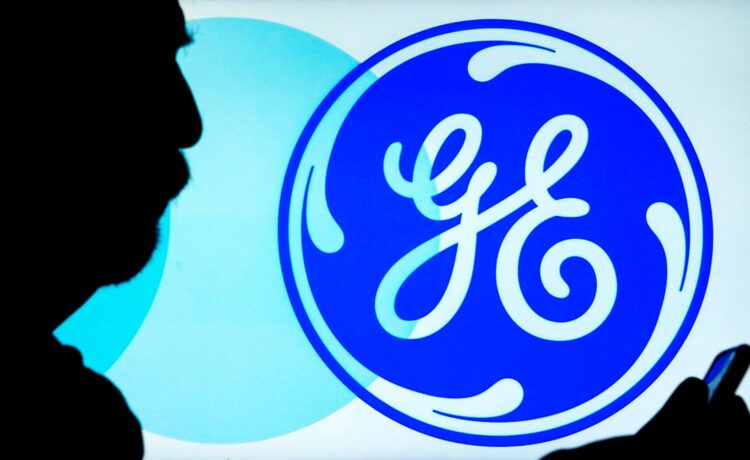GERMANY – 2024/12/16: In this photo illustration, the General Electric logo seen displayed on a … [+]
On February 6, Honeywell – the Charlotte, NC-based conglomerate operating in industries such as aerospace, building automation, industrial automation, and energy and sustainability solutions – announced plans to split into three companies to boost stock returns, according to MarketWatch.
Since then, the company’s shares have fallen 10%. Is the drop due to investors’ dislike of the break up or disappointment about the company’s revenue and earnings guidance?
Honeywell’s announcement about splitting into three comes after pressure from a so-called activist investor. While the split up of GE seems to be working finally, many such breakups fall short of the hoped-for value.
Will Honeywell’s breakup plan unlock value? Elliot Investment Management sees the stock increasing as much as 75% in the next two years. However, analysts are more pessimistic about the company’s stock and important questions – see below – remain unanswered.
Honeywell’s Split Up Plan, Financial Performance, And Prospects
After its share price under-performed the market – up 8.3% in the last year while the S&P 500 index added 22.6%, according to MarketWatch – Honeywell announced plans to split into three companies. The same day the company released a mixed financial report – exceeding investors’ fourth quarter 2024 expectations and delivering a disappointing forecast.
By the second half of 2026, Honeywell plans to separate its automation and aerospace technologies businesses and to complete the spin off its advanced-materials unit. Activist investor Elliott Investment Management called for the split last fall, estimating the breakup could “push the stock up 51% to 75% over the next two years,” noted MarketWatch.
Honeywell’s CEO took the bait. These three independent companies will build “on the powerful foundation we have created, positioning each to pursue tailored growth strategies and unlock significant value for shareholders and customers,” Honeywell CEO Vimal Kapur said, according to MarketWatch.
Honeywell’s Q4 financial report included the following key numbers:
- Fourth quarter 2024 net sales: $10.09 billion – up 6.9% from the year before and $250 million ahead of the FactSet consensus.
- Q4 2024 net income: $1.29 billion – up 2.4% from the previous year, noted MarketWatch.
- Q4 2024 adjusted earnings per share: $2.47 – down 8.4% and 15 cents above the FactSet consensus.
- Q4 2024 free cash flow: $1.9 billion – down 27% and $100 million above the FactSet consensus.
- 2025 revenue forecast: $40.1 billion – the midpoint of a range between $39.6 billion and $40.6 billion – fell $1.2 billion short of the FactSet sales consensus.
- 2025 adjusted earnings per share forecast: $10.30 – the midpoint of a range between $10.10 and $10.50 – was 62 cents a share below the FactSet average.
- 2025 free cash flow forecast: $5.6 billion – the midpoint of a range between $5.4 billion to $5.8 billion – missed the FactSet consensus by $800 million.
The Evidence On Conglomerate Split Ups
There are very few conglomerates like GE and Honeywell left. To be sure, other companies are in the midst of breaking themselves into pieces.
DuPont plans to spin off its electronics business by the end of 2025 – forming two companies. Moreover, auto parts maker Aptiv is breaking into two: a software and services provider for multiple industries and an electrical systems maker for car companies, noted Barron’s.
Moreover, conglomerates can take a long time to unwind and to demonstrate whether their breakups were successful.
For example, in the early 2000s, I wrote often about the concept of the conglomerate discount — namely a basket of companies in unrelated industries were worth less than the sum of their parts (meaning what the distinct business would be worth if they were independent companies).
In 2007, I met with GE’s chief financial officer, and he asked me what GE could do to increase the value of its stock.
I told him GE should sell off all the businesses with moderate to low profit potential where GE lacked a competitive advantage and use the proceeds to build the businesses in industries with high profit potential and strong competitive positions — such as Aircraft Engines.
GE eventually achieved the idea I had in mind and the change is now perceived as having been very successful.
GE’s aerospace, energy and healthcare units are now stand-alone businesses that, together, have a market value nearly four-times bigger than GE had in 2022. The aerospace unit alone has a value of around $215 billion, which is more than double that of pre-breakup GE, according to the Wall Street Journal.
Behind the rising value of the GE’s spinoffs is their increased earnings. For example, GE Vernova, the power business, added three percentage points to its operating margins last year and investors expect another three percentage point increase in 2025. Meanwhile the company’s earnings per share are expected to soar 50% a year for the next two years while sales rise at a near 10% annual rate, noted Barron’s.
Although GE HealthCare has not performed as well – the business is expanding margins and growing earnings at about 10% a year – GE Aerospace is expecting almost 20% a year earnings growth as its profit margins rise by three percentage points in 2024, Barron’s wrote.
I think the logic behind the breakup of conglomerates has been widely accepted for decades — however, well-established conglomerates with long-tenured executives in top positions are very reluctant to move. It takes outside agitation and – in the case of GE – an outsider CEO to implement the changes.
The record on the value of breakups is mixed — conglomerates such as United Technologies, Danaher and Alcoa enjoyed stronger performances and higher multiples after splitting.
However, a Bain & Co. study of 350 public spinoffs between 2000 and 2020 found 50% of them had not created more shareholder value two years after the splits and 25% suffered a value erosion, noted the Journal.
To get a payoff from the spinoffs, requires a combination of luck and management skill. Here are the key questions that must be answered in the affirmative:
- Does the industry on which the spinoff focuses have high growth and profit potential?
- Does the spinoff excel — compared to rivals in the industry — at performing the activities critical to winning and keeping customers and gaining market share?
- Does the company field a leadership team that attracts and motivates the industry’s best talent to deliver excellent service to customers and to innovate in ways that keep customers buying?
Where Will Honeywell Stock Go Next?
Were Honeywell split up, its price-earnings ratio could be higher. Based on comparable firms, the weighted average PE of the three Honeywells could be about 28 times – eight more than Honeywell’s PE on 2025 estimated earnings, reported Barron’s.
Investors will have to wait – likely until late 2026 to know whether Honeywell investors will benefit from this estimated increase in the company’s weighted average PE.
Wall Street analysts see a decent rise ahead for Honeywell stock. Based on 17 analysts offering 12-month price targets for the company, the share price could rise about 19.4% were the stock to reach the average price target of $245.31, TipRanks noted.
If I were considering whether to invest in Honeywell stock, I would try to answer the three questions I mentioned above for each of its three spinoff companies.
To be sure, as an independent business Honeywell’s aerospace technologies business could be worth “about $104 billion,” reported Axios. The business grew faster than the rest in 2024 – accounting for 40% of Honeywell’s revenue, growing 13%, and earning a 22.6% segment margin, according to Honeywell’s earnings release.
Moreover, as an independent company, the aerospace unit would be “one of the largest aerospace suppliers,” noted the Journal. The company’s other business units either grew more slowly or shrank last year.
Until 2026 when more answers to those questions become clearer, the company could continue to report slower-than-expected growth. That may create a lower entry point for investors who believe Elliott’s thesis about the three Honeywell stocks.


